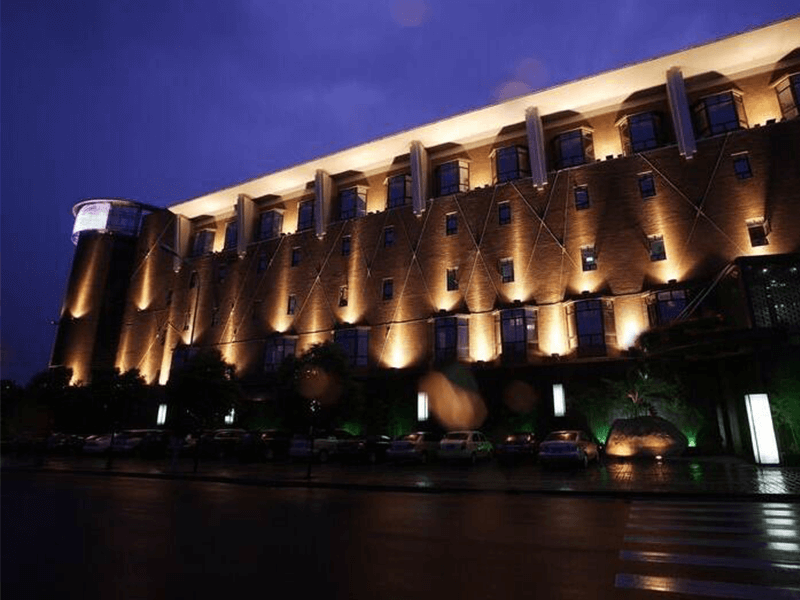1. Fundamental Technology: LED wall washers operate on the fundamental principles of light-emitting diodes (LEDs). LEDs are semiconductor devices that generate light by responding to an electric current. Their ability to directly transform electrical energy into visible light sets them apart from conventional lighting sources.
2. Directional Illumination: Outdoor wall washer lights are designed with precision optics to achieve controlled and directional illumination. This design allows uniform light distribution across surfaces, eliminating the uneven lighting associated with conventional fixtures. Directional illumination is instrumental in accentuating architectural features or highlighting specific elements in outdoor spaces.
3. Color Rendering Capability: LEDs can produce various colors. LED wall washers leverage this feature, allowing dynamic color options to create visually engaging lighting displays. The color rendering capability adds a layer of versatility, enabling designers to craft atmospheres that align with the desired aesthetic.
4. Dimming and Control Options: Many LED wall washers have dimming capabilities, providing a nuanced control over light intensity. This feature allows for dynamic adjustments to suit different lighting requirements, from ambient settings to accentuating specific architectural details. Dimming options contribute to energy efficiency by tailoring the lighting output to the immediate needs of the environment.
5. Energy Conversion Efficiency: Linear led wall washer light excels in energy efficiency, converting more electrical energy into visible light than traditional lighting technologies. This efficiency results in reduced energy consumption and contributes to cost savings over the long term. The focus on energy conservation aligns LED wall washers with contemporary sustainability objectives.
6. Instantaneous Illumination: LED wall washer strip provides instantaneous illumination without needing warm-up periods. Unlike some traditional lighting sources, LEDs reach full brightness immediately upon activation. This quick response ensures that outdoor spaces are promptly illuminated when required, enhancing both functionality and safety.
7. Heat Management: LED wall washers are designed with effective heat dissipation mechanisms, preventing excessive heat buildup. The superior heat management contributes to the longevity of the LED fixtures, ensuring consistent performance over an extended lifespan. This characteristic is crucial for maintaining the reliability and durability of LED wall washers in various outdoor environments.
8. Flexibility in Design and Installation: Outdoor LED wall washer lights provide extensive design flexibility thanks to their compact size and diverse form factors. This flexibility enables seamless integration into various architectural elements, ensuring the lighting fixtures complement the overall design aesthetics. Ease of installation and adaptability to different mounting options enhance LED wall washers’ practicality in diverse outdoor settings.
